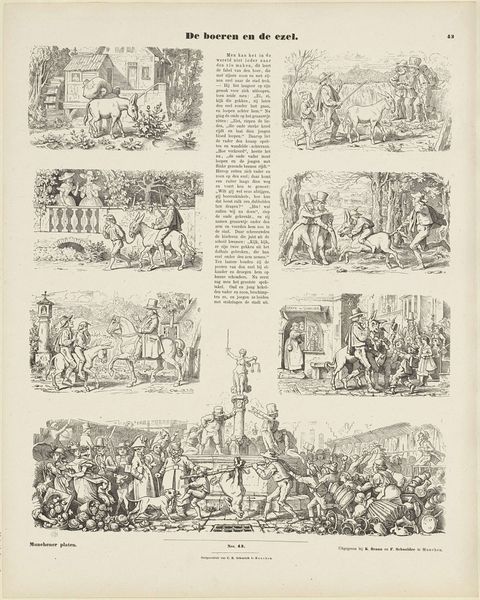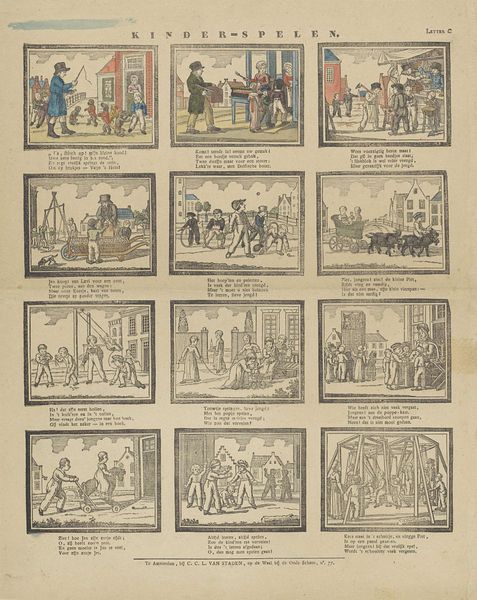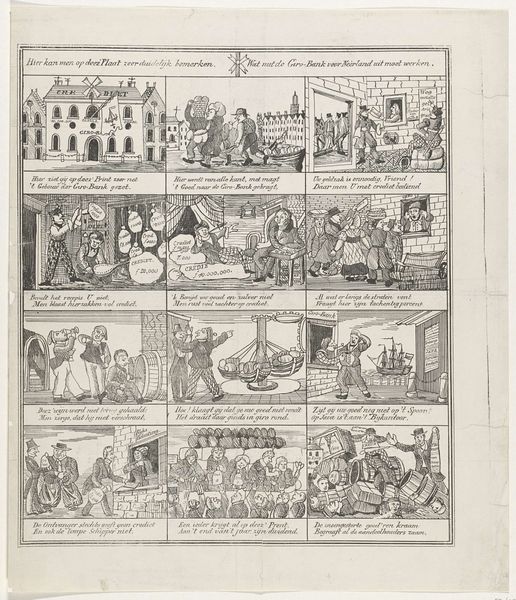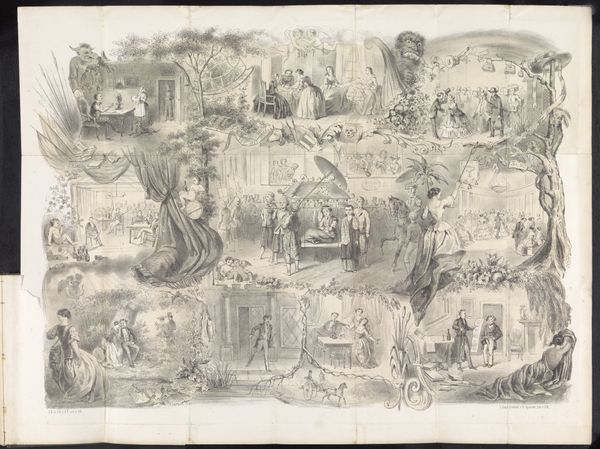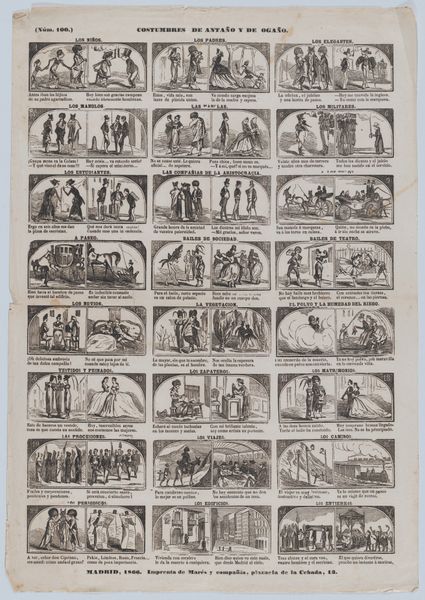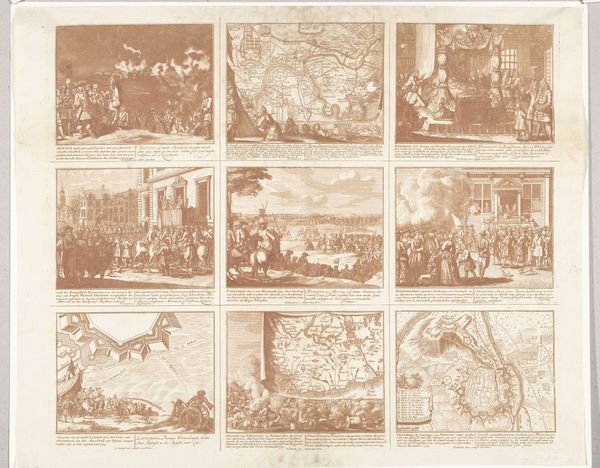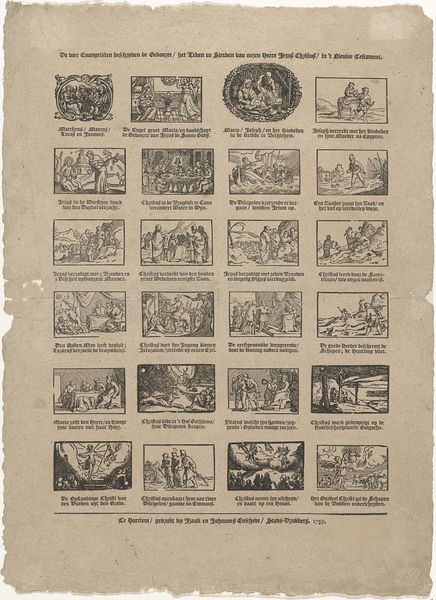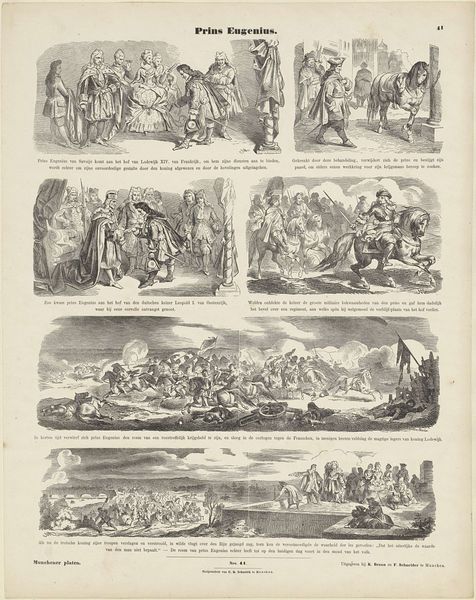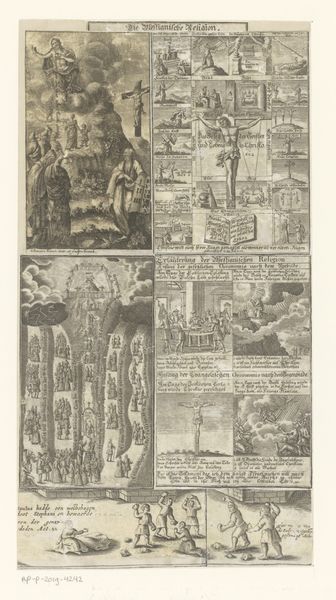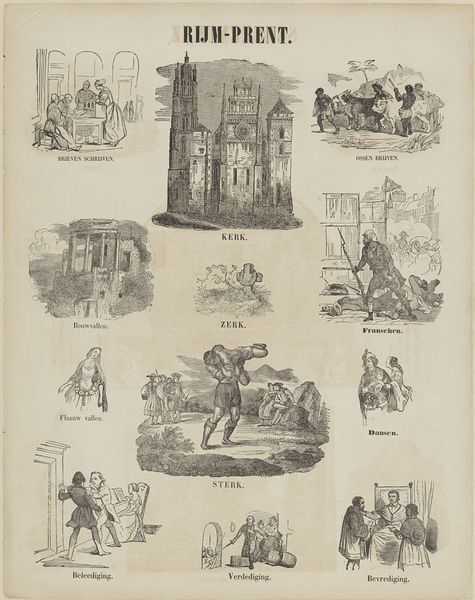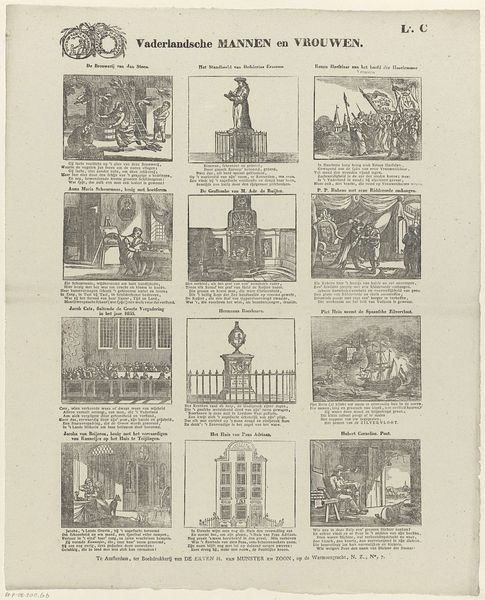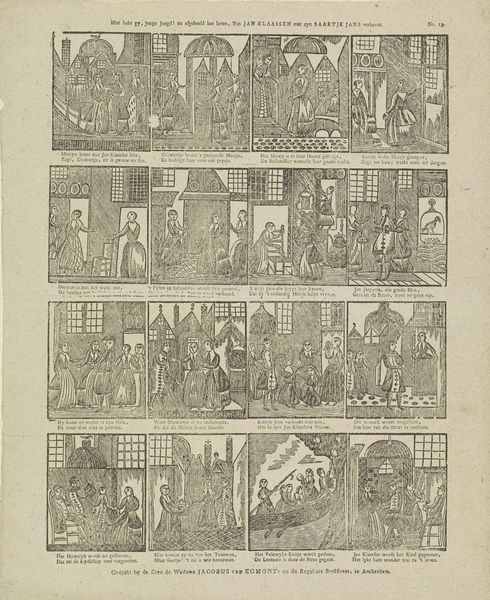
Broadside with 24 scenes showing the Catalan soldiers arriving in Cuba to quell the rebellion 1868
0:00
0:00
drawing, lithograph, print
#
drawing
#
narrative-art
#
lithograph
# print
#
soldier
#
history-painting
#
watercolor
Dimensions: Sheet: 17 5/16 × 12 3/16 in. (44 × 31 cm)
Copyright: Public Domain
Editor: This lithograph, "Broadside with 24 scenes showing the Catalan soldiers arriving in Cuba to quell the rebellion," was created in 1868 by Antonio Bosch. It’s filled with so many tiny vignettes! The central image, an archway flanked by crowds, seems celebratory, but the overall context of quelling a rebellion feels…fraught. What can you tell me about the socio-political climate surrounding this image? Curator: That's a key observation. This broadside isn't just a historical record; it's a piece of political propaganda. Consider that it depicts Catalan soldiers being welcomed *back* to Barcelona, ostensibly as heroes, after suppressing a rebellion in Cuba. Think about the colonial power dynamics at play. Spain, as a declining empire, was desperately trying to hold onto its overseas territories. The Cuban rebellion was a direct threat to that power. Editor: So, the celebratory scenes are trying to mask a more complex, perhaps even a darker reality? Curator: Precisely. And that's where understanding the public role of art becomes crucial. This image served to legitimize Spanish authority and bolster national pride in Catalonia. The artist, Bosch, isn't simply documenting an event; he's actively shaping public opinion. What effect do you think the depiction of twenty-four sequential scenes had on the viewer at the time? Editor: I imagine it created a sense of continuous action and reinforced the narrative. It's like a comic strip meant to persuade, not just inform. It almost feels manipulative now. Curator: Exactly. Think about how the seemingly innocuous images of cheering crowds could serve to normalize and even glorify colonial violence. Reflecting on that duality can help us understand how political narratives are constructed and disseminated through art. It certainly leaves you thinking about how historical events are carefully mediated through the visual language of the time. Editor: Absolutely. It’s given me a lot to consider regarding the public role of art and the motivations behind imagery. Thank you!
Comments
No comments
Be the first to comment and join the conversation on the ultimate creative platform.


